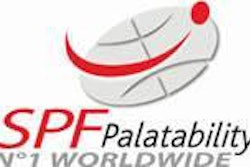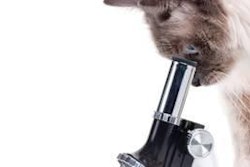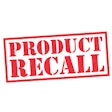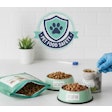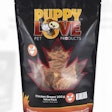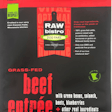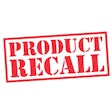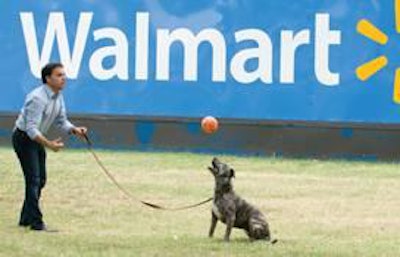
Food safety is no small enterprise. As Frank Yiannas, VP of food safety for Walmart, describes, thousands of professionals around the world have been trained, millions are spent on research, countless inspections are done at home and abroad—and yet, food safety remains a significant global health challenge. Why?
“I became persuaded several years ago that to improve food safety, we needed to move beyond traditional testing, inspection and training—now, we still have to do those, but you have to move beyond them and start adopting principles related to organizational culture and human behavior,” Yiannas says. “One of my favorite definitions is food safety = behavior. If you’re trying to change the food safety performance of a company or, for example, the entire petfood industry or even a country, what you’re really trying to do is change a lot of people’s behavior.”
Yiannas believes so strongly in this equation that he wrote a book, Food Safety Culture: Creating a Behavior-Based Food Safety Management System (Springer, 2009). His beliefs, experience and learnings extend to petfood safety.
“Right now, more than at any time in human history, petfood safety, and food safety in general, is more of a shared responsibility than ever before,” Yiannas says. “The food system today, how we get food from farm to fork or, in this instance, how we get food from the farm to the pet’s bowl, has become increasingly complex and really dependent on many different stakeholder groups.
“Moreover, it’s a global food supply,” he continues, “and if you think about food safety regulatory oversight in a global system, it’s a patchwork of different national rules and regulations and various state regulations.” Hence, the responsibility is shared among ingredient suppliers, petfood and treat manufacturers, industry, regulatory and academia, Yiannas says. “Consumers have a role to play, even the media.”
Yiannas maintains that to meet this responsibility, food safety professionals—in petfood or human food—have to master not only the hard sciences or skills, such as understanding microbes, the time-temperature process and hazard analysis and critical control points; they also have to master concepts of behavioral sciences and organizational culture.
“Food safety professionals are pretty good at writing HACCP plans and food safety programs. The real challenge has been getting organizations to adopt them and employees to believe in them. That’s why I say the soft stuff is the hard stuff,” Yiannas says.
So, how does a company tackle the soft stuff? “Organizations that have strong food safety cultures make the choice to be really good at food safety,” Yiannas explains. “Those organizations generally have leaders like we do here at Walmart who are very committed to a strong safety culture and ultimately protecting their customers. Even more importantly, they talk about food safety being part of their value or belief system. People generally want to follow the law, but they don’t get inspired by regulations as much as they do trying to act in a way that aligns with their values or beliefs.
“Notice I say ‘values or beliefs,’” he continues. “The words we use here are important. Food safety is really part of our belief system, and it’s not a priority. Because priorities can change but values and beliefs do not.”
Organizations that want to establish a strong food safety culture ensure it’s not just a program or the “flavor of the month,” Yiannas says. In his years in the profession and numerous experiences with companies all over the world, he’s encountered many great food safety cultures that share similar core attributes. They:
- Establish clear food safety expectations. “The number one reason employees sometimes will not do what they’re supposed to do is they don’t know what to do,” Yiannas explains. “So organizations committed to a food safety culture make sure those expectations are crystal clear and employees know how to do them and do them well.”
- Train and educate their employees on food safety. “This might seem like a no-brainer, but I will tell you those organizations that do this well understand the difference between the two,” Yiannas says. Education is explaining the regulations, microbes that might be involved with the food product, time-temperature requirements and similar concepts, he explains; training is showing employees how to actually do food safety.
“They need to know why through the education, but they need to be trained how to do those steps in a safe manner,” he says. “Here at Walmart we call this doing food safety the Sam Walton way. He was really smart and good at human behavior.” Yiannas quotes Walton: “I truly believe that people anywhere will respond to the same motivational techniques we use if they are treated right and given the opportunities to be properly trained.”
- Communicate food safety on a regular basis. “To me, communication and culture are two sides of the same coin,” Yiannas says. “Great food safety cultures talk about food safety often with their employees and associates. And employees will know what’s important to a company by what their leaders are talking about and emphasizing. If you walk into a company and you don’t see any of what we call artifacts of food safety—they’re not talking about it, there are no signs or symbols, if you pick up the company newsletter and you don’t see anything about food safety—it may not be part of the culture.”
- Establish goals and measurement systems. Yiannas points out that goals are an antecedent to the right behavior and the beginning of meaningful progress. He shares another Walton quote: “Set high goals, encourage competition, and then keep score.” Yiannas adds that companies that are really good at food safety measure both leading and lagging indicators—preferably leading ones that will prevent problems in the first place.
- Establish consequences. Yiannas stresses there are positive and negative consequences, but they all reinforce food safety behaviors. “We like to say one of the main reasons we measure food safety is not necessarily to catch people doing things wrong. Clearly, if we catch something that doesn’t meet our standards, we will immediately correct it. But one of the main reasons we measure food safety is to catch people doing things right and to encourage and motivate the right types of behavior,” he says.
Yiannas has further recommendations for petfood companies looking to improve their food safety performance, such as focusing on ingredients. “Over the next few years, the food industry and certainly the petfood industry are going to hear a lot about food traceability because of the Food Safety Modernization Act,” he says. “While we believe traceability is good, it doesn’t go far enough. Food traceability tells you where a product came from; it doesn’t necessarily tell you how that product was produced. So we’ve been using the term ‘food transparency.’”
Companies pursuing food transparency require their ingredient suppliers to be certified to food safety standards, Yiannas says, in addition to having certification themselves. And when it comes to that, he strongly recommends adopting one of the global food safety standards such as the Global Food Safety Initiative. (Walmart is an active member, with Yiannas serving on the GFSI board.)
“A traditional third-party food safety audit really isn’t equivalent to one of the GFSI benchmark standards. They’re different in many ways,” he insists. While a traditional third-party audit basically entails a company creating a standard, then hiring another company to audit against that standard, under the GFSI certification, standards are created and then thoroughly reviewed by a technical working group of experts from around the world.
GFSI also includes a benchmark process in which a group of global experts deems those standards equivalent, Yiannas says. This process requires that the standards be accredited through an accreditation body such as the American National Standards Institute to ensure there’s no conflict of interest between the standard owner and the organizations auditing against the standard. Finally, the GFSI benchmark standards have defined auditor qualifications.
“My recommendation to the petfood industry is to learn more about GFSI by visiting MyGFSI.com,” Yiannas adds. “Also, talk to companies that have already embarked on or achieved certification against one of the GFSI benchmark standards. There are some petfood and treats manufacturers that have already achieved certification and more working toward this—I know with certainty—so sitting down with them and learning what their experience has been would be a great first step.”
Yiannas also recommends attending GFSI’s annual meeting, which next occurs February 15-17, 2012, in Orlando, Florida, USA.
“At Walmart, we genuinely believe that food safety, or petfood safety, is not a competitive issue, nor does it provide a competitive advantage,” Yiannas say. “The petfood industry can do more by working together than by any single supplier working alone. Ultimately, enhancing food safety does not benefit just a single manufacturer; it benefits all manufacturers, retailers, customers and, from my perspective, most importantly it benefits pets.”
To that end, Yiannas issues a call to action: “The petfood industry should come together in a collaborative manner and really look at adopting what I would call global, harmonized, leading-edge food safety standards for the industry. Not only will that further enhance the safety of petfood products; we genuinely believe through our experience in the human supply chain that it will drive efficiencies in the food system, specifically in the petfood system, and further enhance consumer confidence.”


